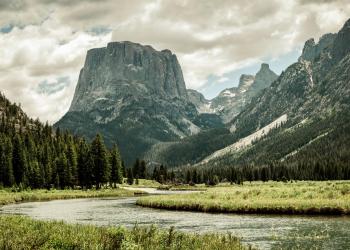Welcome to Bridger-Teton National Forest
Located in Western Wyoming, the Bridger-Teton National Forest offers more than 3.4 million acres of public land for your enjoyment. With its pristine watersheds, abundant wildlife, and immense wildlands, the Bridger-Teton comprises a large part of the Greater Yellowstone Ecosystem, the largest intact ecosystem in the lower 48 states. Offering nearly 1.2 million acres of designated Wilderness, over 3,000 miles of roads and trails, and thousands of miles of unspoiled rivers and streams, the Bridger-Teton offers something for everyone. We encourage you to visit this beautiful landscape and experience your forest.
Help Shape the Future of the Bridger-Teton

The Bridger-Teton National Forest began the process to revise its forest plan. Forest plans function similarly to county comprehensive plans and zoning documents, and provide comprehensive, strategic, and integrated resource direction that guide all decisions about future projects.
Help shape the future of the Bridger-Teton National Forest so together we can care for the land and serve people for generations to come. Stay tuned for upcoming events and additional information.
Commemorating 100 Years of the Gros Ventre Landslide

The Gros Ventre Slide Geological Area was designated by the Forest Service in 1962 to preserve and commemorate the 1925 Gros Ventre landslide. It serves as a reminder that geology is always changing, sometimes slowly, and sometimes in the blink of an eye.
Snake River Permits

From May 1 through Nov. 1, Snake River users have the option to purchase a day pass via electronic pay station kiosks at Snake River boat ramps with a credit or debit card or they can purchase a season pass on Recreation.gov.
Timed launch reservations for large non-commercial groups of 16-30 people are also available on Recreation.gov for May 1 through Oct. 1.
Be Bear Wise: Keep Bears Wild & People Safe

For the safety of humans and bears alike, the Bridger-Teton National Forest is committed to providing readily available information to Forest visitors about food storage regulations. This will help minimize negative interactions between people and bears when recreating in bear country. We encourage you to take the pledge to educate yourself for your safety and the safety of bears!




